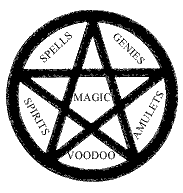Witch hunters bible

The Malleus Maleficarum, usually translated as the Hammer of Witches, is the best known and the most important treatise on witchcraft. It was written by the discredited Catholic clergyman Heinrich Kramer (under his Latinized name Henricus Institoris) and first published in the German city of Speyer in 1487. It endorses extermination of witches and for this purpose develops a detailed legal and theological theory. It was a bestseller, second only to the Bible in terms of sales for almost 200 years The top theologians of the Inquisition at the Faculty of Cologne condemned the book as recommending unethical and illegal procedures, as well as being inconsistent with Catholic doctrines of demonology.
The Malleus elevates sorcery to the criminal status of heresy and prescribes inquisitorial practices for secular courts in order to extirpate witches. The recommended procedures include torture to effectively obtain confessions and the death penalty as the only sure remedy against the evils of witchcraft. At that time, it was typical to burn heretics alive at the stake and the Malleusencouraged the same treatment of witches. The book had a strong influence on culture for several centuries.
Jacob Sprenger's name was added as an author beginning in 1519, 33 years after the book's first publication and 24 years after Sprenger's death; but the veracity of this late addition has been questioned by many historians for various reasons.
Kramer wrote the Malleus following his expulsion from Innsbruck by the local bishop, due to charges of illegal behavior against Kramer himself, and because of Kramer's obsession with the sexual habits of one of the accused, Helena Scheuberin, which led the other tribunal members to suspend the trial.
It was later used by royal courts during the Renaissance, and contributed to the increasingly brutal prosecution of witchcraft during the 16th and 17th centuries.

